Astronomy’s first gap-clearing planet fills in our “missing link”
Planets grow from protostellar material in disks, leading to full-grown planetary systems in time. At last, the final gap has been filled.

Here in our Universe, one thing we could have been certain of, even before we began to examine or even detect worlds beyond our own, is that the Universe does have a mechanism for creating planets and planetary systems in orbit around stars. We have some supremely strong evidence that indicates there must be a pathway for that to occur: the existence of Earth and the other planets orbiting our own Sun. Because we exist, and our planet and the other planets in the Solar System exist, then the Universe must have some way of creating these planets.
So how is it, exactly, that planets actually form within our Universe?
To answer that question, we need to look to the Universe itself. Sure, we have theories that detail how planets could form, and by combining two fields of astronomy that might seem barely related — cosmology and exoplanet studies — we can learn an awful lot about the cosmic story that brings planets into existence. But even with all we learn from that, including the conditions under which stars can come to possess planets, we still have gaps in our understanding. In an ideal world, we’d have no gaps at all: we’d be able to trace the story of planet formation, step-by-step, from a pre-stellar cloud of material to a fully grown-up and evolved system of mature planets.
Since we don’t have tens of millions of years to sit around and watch a system form and evolve, this might seem like an impossibility. But with the new discovery here in 2025 of planet WISPIT 2b, we’ve finally filled in the last “missing link” in the cosmic story of planet formation. Here’s what we know and how we got there.
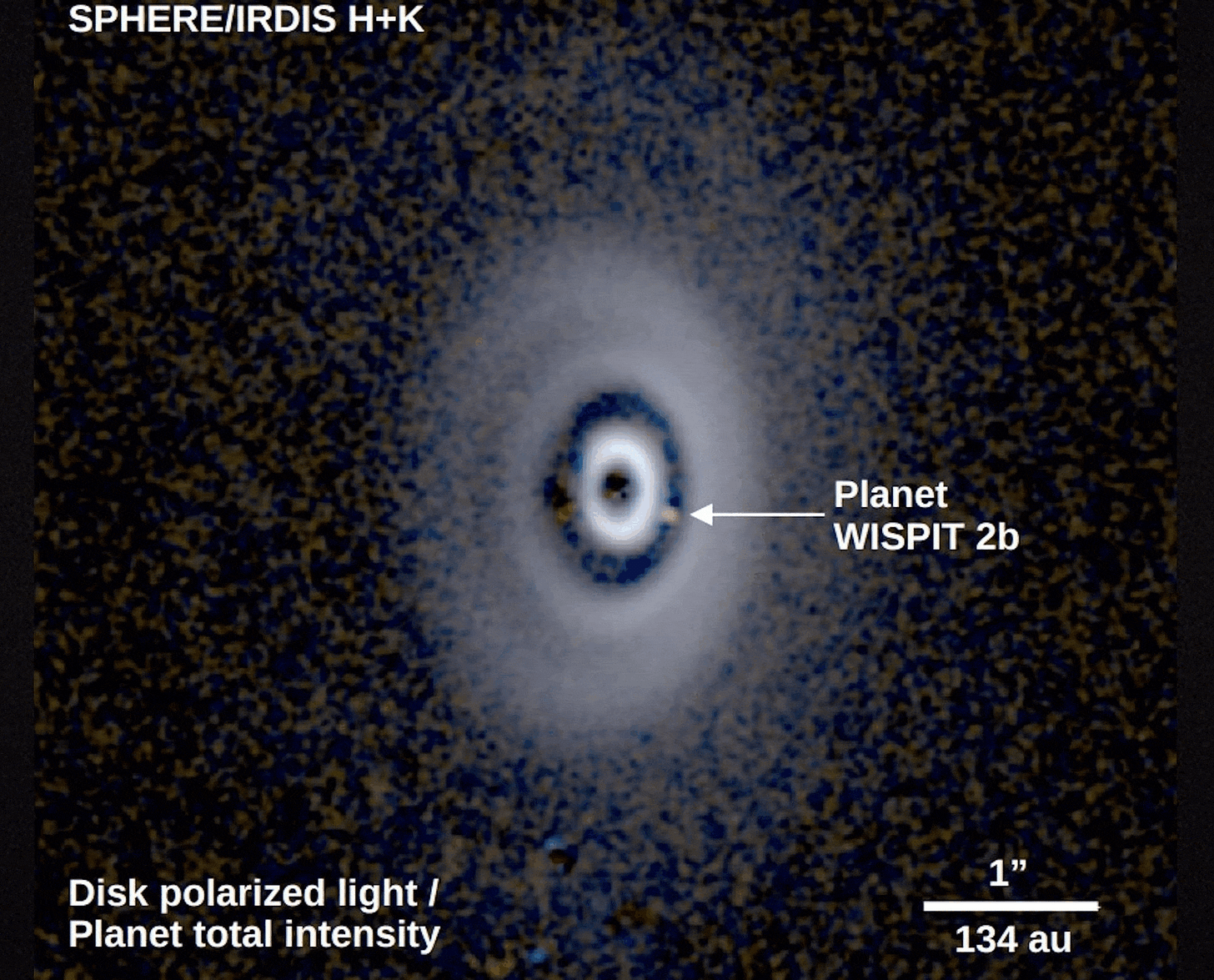
From a cosmic perspective, we know that the very first stars in the Universe couldn’t have had planets at all. In the aftermath of the hot Big Bang, the Universe went through several important phases in its early evolution.
An early quark-gluon plasma state cooled, creating bound hadrons: specifically leading to a dense, expanding sea filled with protons and neutrons.
Slightly later, nuclear reactions began occurring, as protons and neutrons fused together without immediately being blasted apart, creating an initial abundance of the light elements and their isotopes.
And then, significantly later, neutral atoms formed, followed by the gravitational growth of overdense regions. Once enough matter accumulates in one pocket of space, star-formation, for the first time in the Universe, can finally occur.
But back in these early stages, planet formation is impossible. When these new stars form, sure, there’s going to be abundant reservoirs of material surrounding them: material that you’d think could wind up forming a planet.
However, that material is almost exclusively hydrogen and helium: some 99.99999991% percent hydrogen and helium, by mass. With so few heavy elements, whatever doesn’t become a star simply gets blown away.
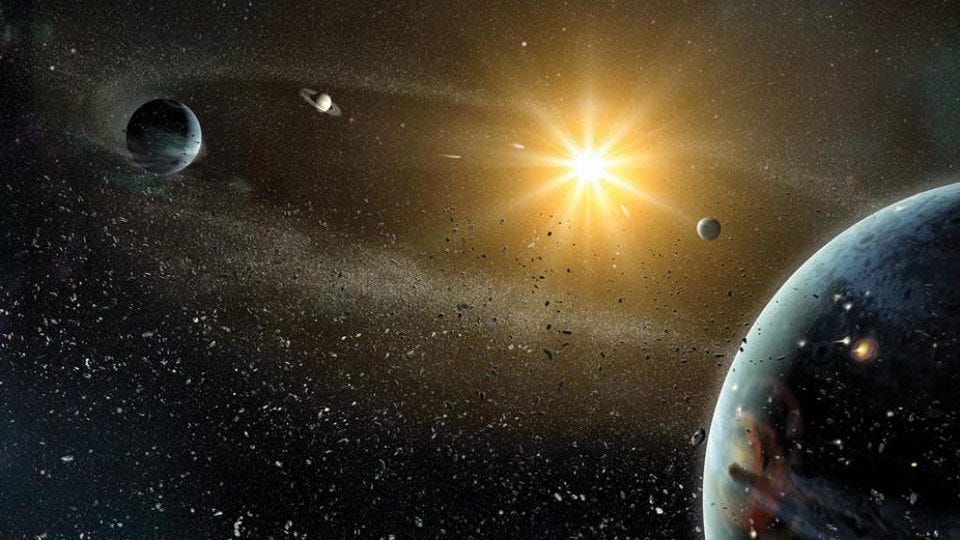
What would it take to enable planets to form, then?
We’d need, at the very least, for sufficient enrichment of that star-forming material to enable the existence of planets at all. Here in our own Solar System, where we have the eight known planets, we can be confident that we’re above that enrichment threshold. But is there a hard line, above which we’re all but guaranteed to form planets, while below it, planet formation is forbidden?
To answer that question, we have a way of finding out: we can look at the stars in our vicinity and search for planets around them. Then, at the same time, we can measure the heavy element content (what astronomers call “metallicity”) of the parent star (or stars), and see which stars do and don’t have planets.
Get expert classes, premium print issues and exclusive event perks.
As it turns out, here in our modern Milky Way, about 80-90% of the stars that we can detect are consistent with having planets around them, but not 100%. It appears that, if you have about 25% or more of the heavy elements found in our Sun, you’re almost guaranteed to have planets. If you go down to between 8% and 25% of our Sun’s heavy elements, you may or may not have planets. And if you look down at star systems with below 8% of the Sun’s heavy elements, very few of them have planets, with no systems below 1% having any planets at all. With over 6000 detected exoplanets in the book, this tells us where planets have and haven’t formed.
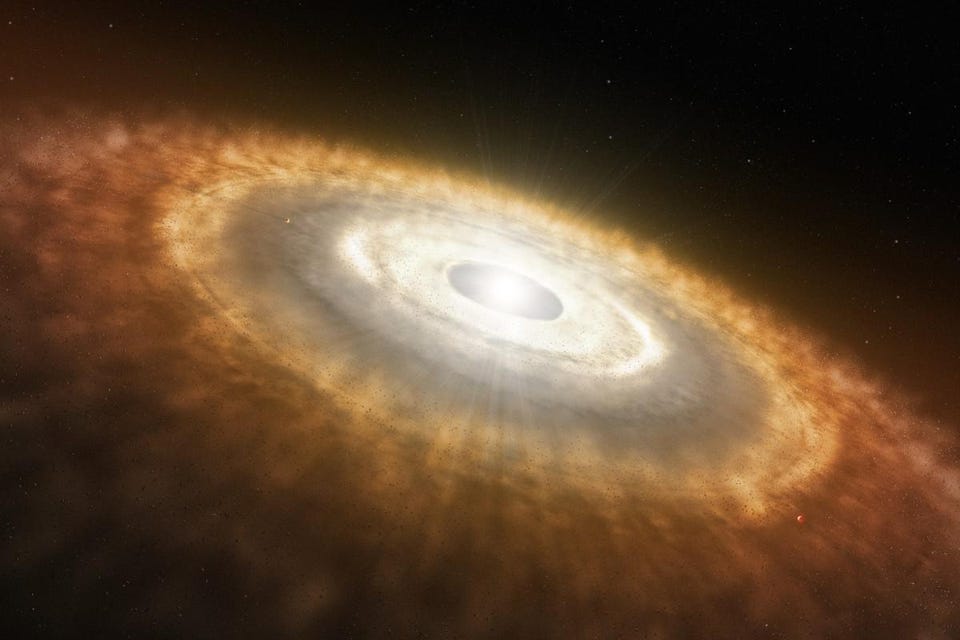
That information serves as the starting point for our big planet-formation question: how do we go from a cloud of gas that’s going to collapse to form stars to a full-fledged star system with a system of planets around it?
Before we get to the evidence, we should be fair to the theorists, and note that there’s been at least an outline of a theory for planet formation that’s many decades old: older than any of the observational evidence we have for how planets actually do form. In sequence, the steps that should occur look like the following.
First, a cloud of gas collapses and fragments, leading to the existence of many different sites within a gas cloud where either a new star (singular) or a system of new stars (two or more) will form.
Next, around these protostars, a disk-like distribution of gas and dust — made from the same elements that the star and its progenitor gas cloud are made from — comes to surround them.
After some time as a homogeneous disk, instabilities begin to appear, including gaps, spirals, and dense rings of material, leading to feature-rich structure within those disks.
At some point, usually after the protostar’s ignition into a full-fledged star, that circumstellar material (i.e., material that surrounds the star) gets blown away, eliminating the protoplanetary disk and leaving just a series of planets, plus the remnant dusty debris.
And finally, later in the star system’s life, the dusty debris gets eliminated as well, leaving just a mature planetary system behind.
That is, in theory, at least, how planets ought to form.

Many of these steps have strong evidence supporting them. For example, as you can see in the above image, you can look inside of star-forming regions and observe the protostellar cores of a variety of newly forming stars found within. What we find by doing so is extremely reassuring: that gas clouds that collapse to form new stars do indeed undergo fragmentation. When we see a newly formed star cluster, with hundreds, thousands, or even tens of thousands of new stars inside, it’s easy to assume that it’s only much later — when the cluster dissociates — that our modern star systems mostly made of singlet, binary, and trinary star systems (with a few larger multi-star systems) arise.
But this modern, high-resolution data, acquired with telescopes like the Atacama Large Millimetre/sub-millimetre Array (ALMA), shows that binary and trinary systems are common even from the earliest stages of star-formation, and that while singlet stars are still the majority, it’s mostly the low-mass stars that form singlets, while the highest-mass stars tend to wind up in multi-star systems. It looks like, based on the best observational data we have, that the first theorized step in forming planets has gotten it exactly right: gas clouds collapse and fragment, leading to the existence of many different, disconnected sites where new stars and protostars arise.
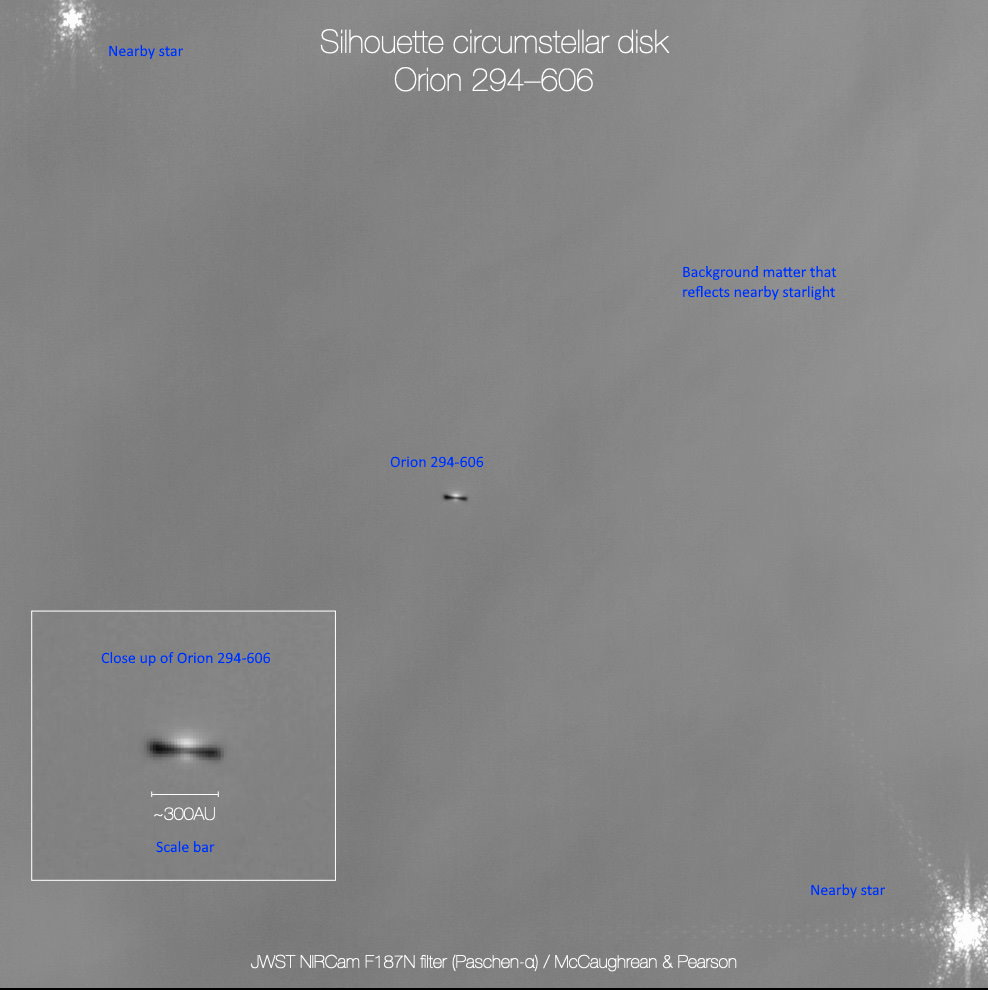
Then, we can look into slightly more evolved star-forming regions, such as the nearby Orion Nebula, and find young stars and protostars that still have protoplanetary disks around them. Indeed, these systems are incredibly common wherever ongoing new star birth is happening, with the Orion Nebula simply representing the closest location to us where a large amount of new star-formation is still ongoing. Over 100 protoplanetary disk-containing objects — young stars and protostars — have been spotted in the Orion Nebula alone with the combined data from Hubble, JWST, ALMA, plus other infrared and radio telescopes.
Originally, these protoplanetary disks appeared to us as mere blobs: as dark silhouettes in visible light and as bright sources of emitted light at infrared wavelengths. However, as we began to leverage better techniques, with high-resolution imagery enhanced by modern instrumentation and through the technique of very-long baseline interferometry, we began to probe these protoplanetary disks for features within them. Particularly useful when the disk is seen face-on (as opposed to edge-on or highly inclined), we sometimes saw uniform, featureless disks, but at other times we’d see features like spiral waves, rings, or gaps within these disks.
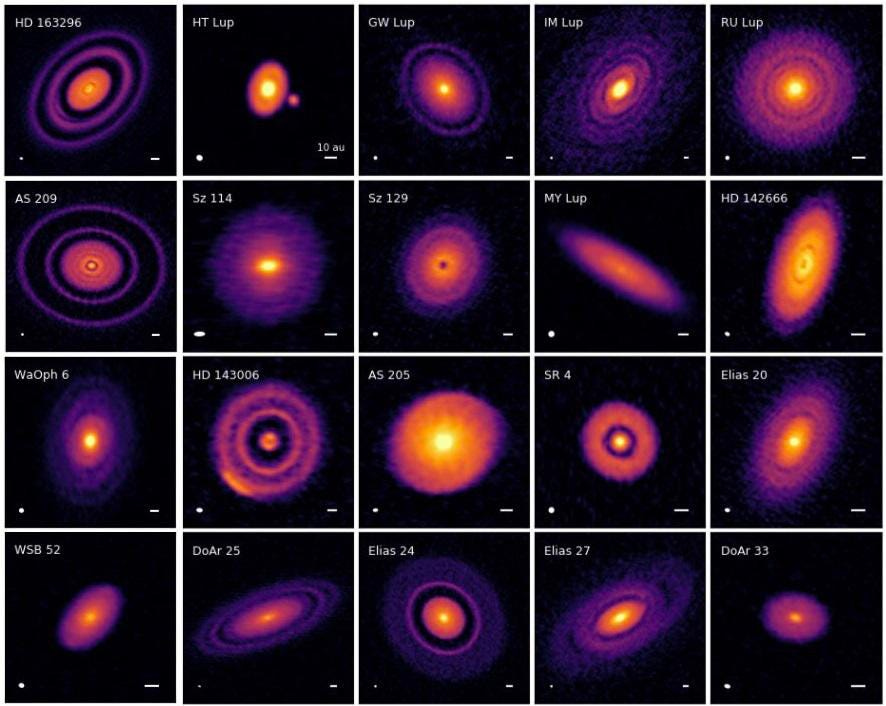
Starting in the early 2020s, we began to see an age difference between the systems that were featureless and the ones that exhibited non-uniform features. In particular, there were three categories that these protoplanetary disks fell into:
systems under 0.5 million years in age, all of which appeared to have uniform disks,
systems older than 2 million years, all of which appeared to have feature-rich disks,
and systems between 0.5-and-2 million years, where some have uniform disks and some display features.
Also, systems that were significantly older than 10 million years in age tended to lack protoplanetary disks entirely, indicating that the process of planet formation begins early and completes in relatively swift fashion in the Universe.
Finding features such as “gaps” and “rings” in protoplanetary disks are relatively common, and it’s generally suspected that the reason for these gaps-and-rings is simple: those are regions where the protoplanetary material has been “vacuumed up” by planets and protoplanets that are forming in precisely those locations. There’s no material there anymore because it has already formed into a planet; the young planet has already cleared its orbit of potentially planet-forming material. This was bolstered in 2023, with the detection of exoplanets PDS 70b and PDS 70c in the same system: found in the inner portions of a cleared-out young star system, one that still had an extant outer protoplanetary disk.

At still later times, of course, we’ve detected many fully mature planets within planetary systems — including via direct imaging when they’re well-enough separated from the parent star — both within systems that still have a debris disk and in systems whose dusty debris disk has fully evaporated. It would seem, then, that we’ve come a phenomenally long way in learning where exoplanets come from. Protostar cores form from gravitational collapse, those protostars develop circumstellar disks, those disks develop instabilities which lead to gaps in the disk, where protoplanets and eventually full-fledged planets form within those disks, the disks themselves then evaporate, leaving mature planetary systems behind.
However, there’s been a missing link in this chain of understanding for a long time now. Although we can image the disks and see the gaps within them, and we can directly image planets at later stages of evolution orbiting their stars, we’ve never seen a disk, with gaps, that also contains an observable planet within those gaps.
In other words, we’ve only suspected the presence of planets within these gaps in protoplanetary disks; we’ve never detected one directly. Or, at least, that was the case until just a couple of months ago here in 2025, when the first planet within a protoplanetary disk gap was discovered: WISPIT 2b.

In a pair of papers recently published in the Astrophysical Journal Letters, high-resolution direct imaging of the protoplanetary disk around the solar-analog star WISPIT 2 revealed many different properties. There is:
an extended disk, spanning hundreds of times the Earth-Sun distance,
with a multi-ringed substructure within the disk, hinting at the presence of planets in the gaps between the rings,
and a young, massive protoplanet embedded within one of the gaps and co-moving along with its host star.
That planet, WISPIT 2b, is the first unambiguous planet found within a multi-ringed disk, with an impressive mass of 4.9-5.3 times the mass of Jupiter. It’s well below the threshold for becoming a brown dwarf (which requires at least 13 Jupiter masses), the age of the parent star is consistent with the previously uncovered timeline of planet formation (it’s about 5 million years old), and the star itself is relatively nearby at 133 parsecs (~430 light-years) distant. The studies also suggest that mass is continuing to accumulate onto this young planet, growing at a rate of 4.5 quadrillion tons per year, or approximately by the mass of Mars’s larger moon Phobos on a daily basis.
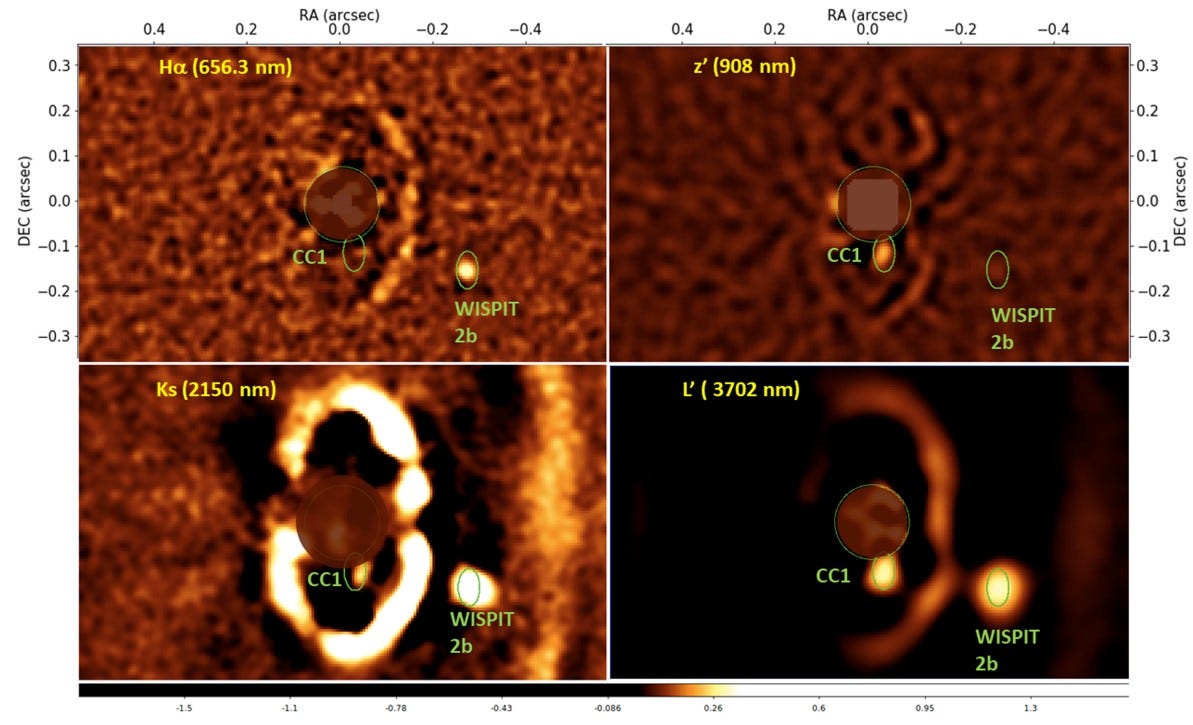
Although there’s also circumstantial evidence for a second, innermore, even more massive planet (around 9 times the mass of Jupiter) located closer to the parent star, the big news is that the most significant “missing link” in the planet-formation story — the disconnect between where gaps form and when planets appear — has now been filled in with the discovery of WISPIT 2b. Now, we can be certain: yes, there is indeed evidence that when we see a gap in these protoplanetary disks, we can be confident that planets do indeed form those gaps. The fact that the size of the gap and the mass of the planet are both compatible with theoretical models of the physics at play only strengthens the science case for this interpretation.
Excitingly, this suggests that high-resolution direct imaging observations carried out for nearby young stars with current technology can reveal, at the very least, the most massive new planets to form in these star systems. Where we see gaps in protoplanetary disks, we now have direct evidence linking the presence of planets to the existence of those gaps: perhaps even a full 100% of gaps in these disks are caused by planets. The WISPIT survey, standing for Wide Separation Planets in Time, leverages the SPHERE instrument aboard the ESO’s Very Large Telescope and the University of Arizona’s MagAO-X adaptive optics system aboard Carnegie science’s Magellan telescope: two of our current generation of flagship-class telescopes. It’s almost a certainty that more planets will be found in protoplanetary disk gaps in the coming years, giving us our first end-to-end confirmation of a scenario for how the majority of planets in the Universe actually form.
Ethan Siegel, Ph.D., is an award-winning theoretical astrophysicist who's been writing Starts With a Bang since 2008. You can follow him on Twitter @StartsWithABang.
Get more from Big Think:
Big Think | Mini Philosophy | Big Think Books | Big Think Business





Fantastic article and photo Dr. Siegel! Thank you.
Unthinkable but real